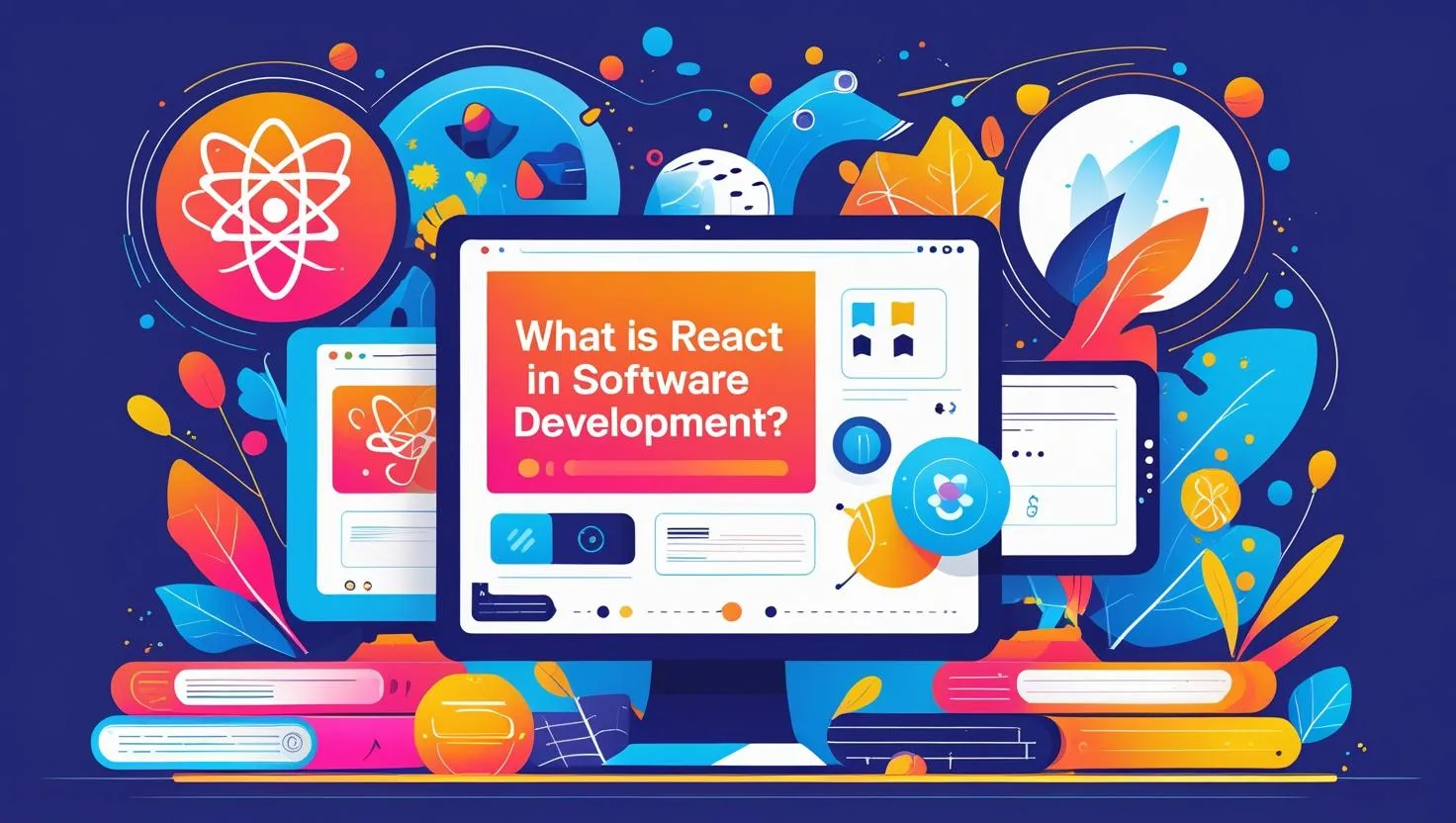What Is React in Software Development? Discover Its Key Benefits

Hello! I’m Somen, and I’m excited to welcome you to another engaging blog post on MATSEOTOOLS. Today, we’re diving into the world of software development to discover one of its most powerful tools: React. If you’ve ever wondered, “What is React in software development?” or why so many web apps look so smooth and fast these days, then you’re in just the right place! In this article, I’ll help you understand what React is, why it’s become such a buzzword, and how it can make building user interfaces more interactive, efficient, and scalable. So, whether you’re a curious beginner or looking to upgrade your creative skills, I’m here to guide you every step of the way with simple explanations and helpful examples.
What Is React in Software Development?
React: A Building Block for Web Interfaces
Let’s start with the basics. React, often called “React.js” or just “React,” is a popular JavaScript library created by Facebook for building user interfaces — basically, the parts of a website or app that people click, see, and interact with. Imagine React as a lego set for web apps: it lets developers snap together pieces (called “components”) to build complex, interactive sights like dashboards, feeds, shopping carts, and more.
What sets React apart from other libraries or frameworks in development is how it focuses on making web pages update quickly and efficiently. Whenever something changes on the page (for example, when you type a comment or tap a like button), React figures out exactly what’s new and only updates that small part—making everything feel snappy and smooth without reloading the whole page.
Why Was React Invented?
Back in the day, updating web pages was a bit clunky. Every tiny change refreshed the entire screen! Facebook’s developers wanted a way to update just the parts that needed it. Thus, React was born, bringing with it a new way of organizing web projects into reusable and manageable pieces. Now, companies from Instagram to Netflix rely on React to make their user interfaces fast and friendly.
Key Benefits of Using React
Now that we know what React is, let’s see why it’s such a favorite among developers and companies worldwide. Here are the main advantages, gathered in an easy-to-read table:
| Benefit | Description | Why It Matters |
|---|---|---|
| Component-Based | Breaks the UI into small, reusable pieces (“components”) | Makes projects easier to build, manage, and update |
| Fast Updates | Uses a smart system (“virtual DOM”) to update only what has changed | Boosts speed and user experience without full page reloads |
| Strong Community | Huge global support, with lots of tutorials and shared solutions | Easy to find help, resources, and ready-made code |
| Scalable | Works great for tiny sites up to massive web applications | Grows with your project, saving time in the long run |
| SEO Friendly | Can be configured to help search engines see your content | Improves Google visibility and helps attract more users |
Real-World Examples
You’ve probably used React many times without realizing it! Platforms like Facebook, WhatsApp Web, Instagram, and Netflix all use React for parts of their websites. This allows them to deliver those seamless, lightning-fast experiences users love. React is so flexible, it’s even used in some mobile apps, thanks to a related tool called React Native.
Why React Stands Out for Developers
For someone learning coding, React is a fantastic tool to have in your toolkit. Its component-based approach encourages clean, organized code, making teamwork and upgrades much simpler. Plus, with React’s strong community, you’ll never be stuck for long — there are tons of friendly forums, YouTube channels, and resources just waiting to help you along your journey.
How to Get Started or Apply React
Learning React
If you’re eager to dive in, you don’t need to be a super-expert. Knowing basic JavaScript and HTML is a great start. From there, you can explore official tutorials, join online communities, or even follow step-by-step guides right here on MATSEOTOOLS. Each small project you try, like building a to-do list or a photo gallery, will help you get the hang of React’s “component” mindset.
Integrating React into Your Projects
React fits with many other tools, such as libraries for design, artificial intelligence, or digital marketing dashboards. You can use React for small widgets or ambitious, full-size apps. Its modular nature helps you pick and choose just what you need, making projects more flexible and scalable.
React and the Real World
Companies of all sizes are looking for people with React know-how. Just learning the basics can open doors in tech jobs, branding, or even online marketing teams, where interactive user interfaces are key to success.
Conclusion
If you’ve ever wondered how modern web apps stay so sharp, interactive, and friendly, now you know—React is a big reason why! It’s a tool that makes building user interfaces not just easier, but also more creative, maintainable, and scalable for any kind of web project. Whether you’re just starting your journey in software development or looking to grow your skills, taking a closer look at React is a smart and rewarding choice. I hope this introduction has answered your question, “What is React in software development?” and sparked your curiosity to learn more. For deeper guides, tips, and real-world examples, check out the full article and browse more great resources on MATSEOTOOLS. Happy learning!
Written by Somen from MATSEOTOOLS
 Some Question
Some Question


